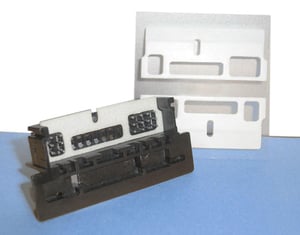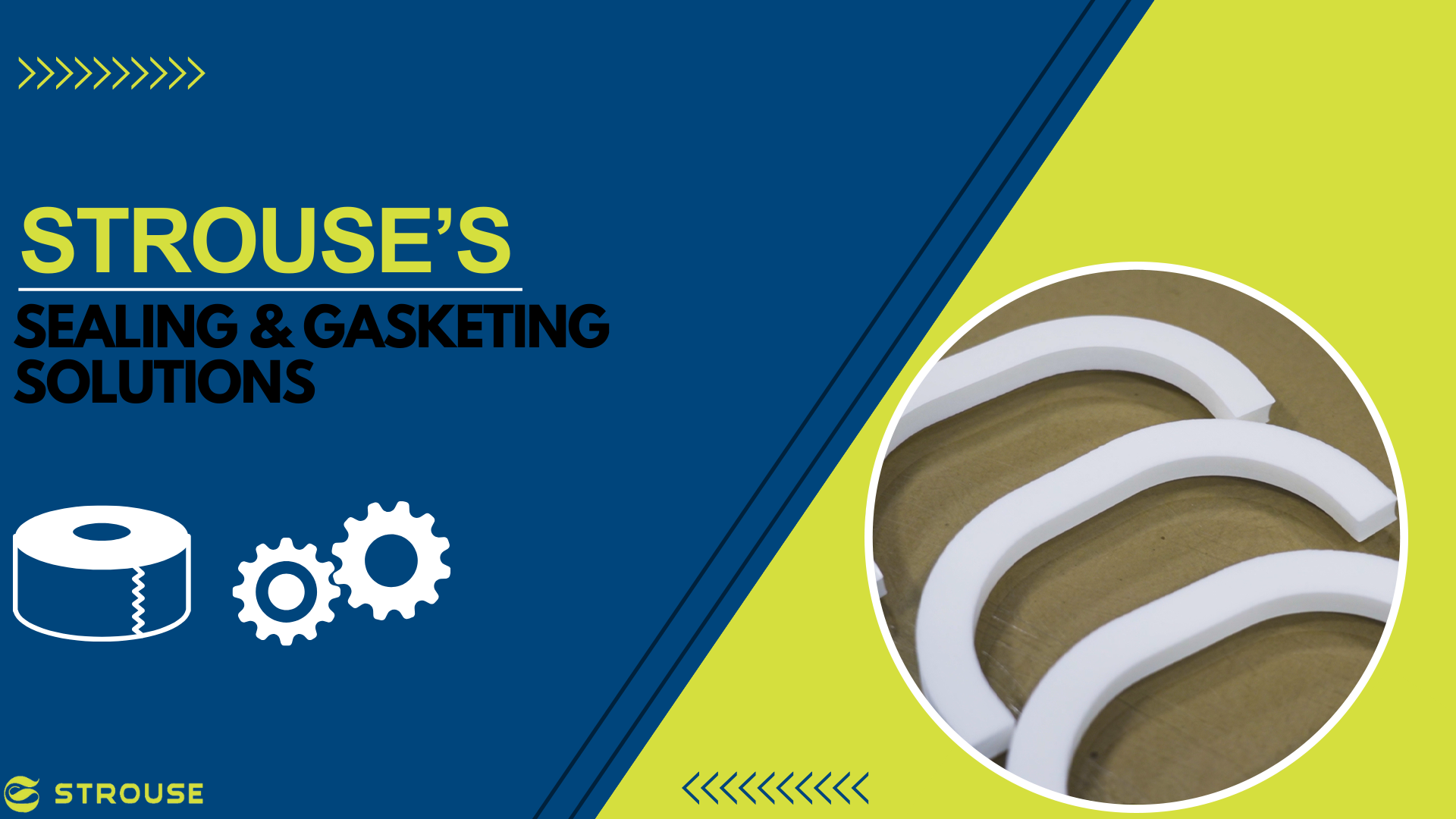
Gaskets & Seals
Small Part. Huge Importance.
Although they’re thin, flexible, and designed to be deformed, foam gaskets create a vital pressure-tight seam between two stationary parts. In some cases, narrow foam sealing tape is better suited for the application than a sheet form.
Strouse provides foam gaskets and flexible foam tape with impressive sealing capabilities. You’ll find that foam is a great alternative to other options (rubber, metal, cork, copper, paper).

Foam is used heavily in nearly every industry, from the appliance and automotive niches to medical and electronics. Manufacturers rely on foam gaskets to perform the following functions:
- Insulation
- Cushioning
- Weather resistance
- Noise reduction
- Electrical absorption
- Fluid restriction
Foam materials possess a broad range of specifications (thicknesses, hardness, density, color).
Silicone Foam
Lightweight in density with optimal flame resistance; lower compression set than a typical silicone sponge; comes with high-temperature acrylic adhesive; available in custom, die-cut designs. Uses: Outdoor sealing and lighting enclosures; protect devices against vibration, shock, and heat; protect and seal communications and electronics
Polyurethane Foam
Flexible, durable, cost-effective, and easy to cut; available in fire retardant and anti-static forms and custom colors; ability to affix pressure-sensitive adhesive backing. Uses: Dust and moisture sealing; component cushioning; thermal insulation; acoustic insulation
Polyethylene Foam
Expanded polyethylene foam is strong and resistant to chemicals, grease, mold, mildew; vibration-resistant; available in conductive, anti-static, and fire retardant forms and in custom colors. Optional cross-linked polyethylene foam is smoother and stronger with superior mechanical and thermal insulation.
Urethane Foam
Low-density; flexible, durable, and easy to fabricate and die cut; excellent thermal and acoustic insulation as well as sealing, vibration resistance, energy absorption, and sound dampening. Uses: automobiles, appliances, electronics, industrial devices
Neoprene Foam
Highly versatile; low-density; excellent water absorption properties; soft, durable, and form-fitting. Uses: applications requiring strong thermal and moisture insulation
Gasketing materials extend beyond traditional sheet form. Narrow sealing tape may be better suited for some applications. Gasketing is easy and effective using foam tape. In most cases, the foam adhesive itself is available as either an acrylic-based or rubber-based solution. Carrier materials can be:
- Polyethylene
- Polypropylene
- Urethane
- Polyester
- Acrylic
- Sponge rubber
- Vinyl
Foam tape is a go-to gasketing material, used to create strong bonds and attachments, in a variety of industries.
Medical
OEMs use foam gaskets to bond devices together in medical components and to secure protective, cushioned dressings to skin.
Electronics
As LCD and touchscreens continue to proliferate, many OEMs are turning to foam tape to ensure components remain reliable and protected. Foam is essential when bonding assemblies and attaching components together.
Automotive
OEMs use foam tape to attach sidewall panels to heavy-duty automobiles that see a significant amount of wear and require durability: commercial vehicles, public service vehicles, and truck bodies.



